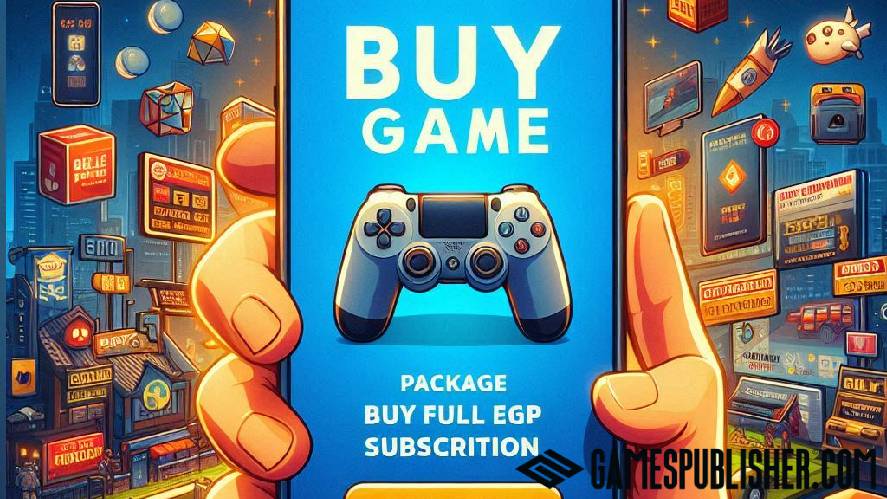In the fiercely competitive era of online gaming, understanding monetization strategies for games is essential for success.
By mastering these strategies, businesses ensure that their games not only thrive but also keep up with rapid changes and user demands.
These strategies help developers and video game publishers build an engaging, sustainable, and growth-oriented gaming industry, minimize disruptions and shortcomings during use, and create excitement and novelty for users.
This will ensure stable revenue, increase profits, and fund new feature improvements in the future.
The Gaming Landscape: Context and Importance
Over the past few decades, the gaming industry has undergone remarkable transformations from traditional strategies to enhanced interactive experiences and the distribution of gaming regions.
With technological advancements and increasingly diverse player preferences, developers have continuously innovated and evolved to cater to the vast global user base and stay competitive with their rivals.
Rise of Digital Gaming
Games have always sparked curiosity and challenge. The first traditional games attracted significant attention, prompting producers to innovate and rapidly develop the gaming industry.
Not only have they improved quality, but they have also expanded gaming platforms to mobile devices and advanced tools like Apple Vision.

This development has helped the gaming market expand globally through online connectivity, as most people now have mobile phones or computers, creating a dynamic and inclusive entertainment industry.
Gaming Audience Demographics
Games are continuously updated to cater to individual user preferences, making them easily accessible and controllable.
They provide entertainment, satisfaction, and challenges, attracting not only the youth but also older adults and women.
Due to the developer’s professionalism in game development, video games have achieved worldwide recognition, enjoying popularity not only in Asia, North America, and Europe but also in emerging markets.
This has made the industry’s demographics incredibly diverse, encompassing various ages, genders, and geographic regions.
Technological Advancements
VR, AR, AI, and cloud platforms have revolutionized the gaming industry.
VR and AR tools enable immersive, interactive experiences, while AI creates smarter, engaging characters, enhancing gameplay and player interaction.
Moreover, cloud gaming allows convenient access without needing powerful hardware that is playable on any device.
This increased variety and interaction raises expectations for the gaming experience and helps make games more complete and engaging.
Game Monetization Models: Analysis of Popular Monetization Strategies
Developers have continuously discovered diverse monetization strategies to innovate the industry, generate revenue, and strengthen sustainability.
Each model has its own mechanisms and corresponds to different games. This affects outcomes, including player experience and the financial health of the developers.
1. In-app Purchases
In today’s digital era, in-app purchases have become exceedingly common in all types of games.

Not only does it generate lucrative revenue for developers, but it also offers players a plethora of items, cosmetics, and exclusive content to cater to individual preferences and tastes.
- Cosmetic Items: Although they don’t affect gameplay, items such as character skins and decorative items provide personalized options that attract users.
- Power-ups: These help create temporary advantages for players in challenging and competitive situations.
- Exclusive Content: Including new characters, levels, storylines, etc., which creates appeal and enhances the user experience.
2. Advertisements
A strong and essential monetization method in today’s gaming industry is strategically integrating advertisements into the user’s gameplay experience.
- Interstitial Ads: These appear during natural breaks, such as between levels. While users may feel intruded upon, this strategy yields significant revenue.
- Video Ads: This strategy is often non-intrusive, brief, engaging, and does not compromise player experience while still generating revenue.
- Rewarded Ads: A highly appealing strategy to users, providing rewards for watching ads.

However, as no direct payment is involved, developers must trade revenue from purchases for ad revenue.
Balancing revenue generation from ads with player experience is crucial for maintaining interaction and benefiting from the game.
3. Subscription Models
With subscription models, players, upon registration, receive continuous updates and access to new content, special items, and advanced game features.
This strategy attracts a loyal player base willing to invest regularly in the game.

The subscription model has provided a stable revenue stream by offering premium content over time and maintaining player interest and interaction.
Emerging Trends in Game Monetization
As the gaming industry becomes increasingly competitive, developers must continually update their strategies to adapt to evolving player needs and attract and retain users.
Emerging trends offer various avenues to boost revenue without compromising the player experience.
Developers have embraced hybrid models, offering free game downloads with optional in-app purchases for additional features.
This approach attracts a large user base interested in free gameplay while generating revenue from players who choose to make purchases.
Another notable trend is the implementation of subscription-based services, providing ad-free gameplay or access to exclusive features.
This model ensures steady income and offers players a seamless and diverse gaming experience.
Additionally, game developers have innovated traditional advertising strategies with interactive ads.
These advertisements are not only viewable but also playable, resembling mini-games that allow players to try before installing.
While these strategies may increase eCPM for developers, they also pose challenges for them by competing rivals.
Economic Impact and Sustainability
The key to the financial sustainability of game developers lies in efficient monetization.
Continuous support for development is a process that demands significant financial resources. Developers need to utilize various monetization features, such as in-app purchases, to reinvest in development.
A steady stream of income enables developers to refine, enhance graphics, and add new features, ensuring the game evolves and improves over time.

Regular updates to levels, characters, events, and game modes help increase player retention and satisfaction.
Enhancing community management through social media, forums, and events helps address feedback and foster a positive, inclusive environment, increasing community engagement and loyalty.
Finally, utilizing different monetization tools and platforms creates attractiveness and suitability, attracting new players while retaining existing ones.
Tools and Platforms for Monetization
To support effective monetization, developers need to utilize tools and platforms for maximum efficiency.
Here are a few tools that ensure long-term success:
Unity and Unreal Engine
Developers can use these engines, which support in-app purchases and advertising, to monetize their games.
These two platforms have user-friendly interfaces and extensive documentation that enhance monetization capabilities while maintaining quality.
AdMob, Chartboost, and IronSource
These services offer advanced management capabilities, comprehensive optimization, and ad placement efficiency.
By enabling adjustment and performance tracking, they help developers better meet their needs and target audiences, thereby maximizing revenue.
RevenueCat and Chargebee
These platforms provide the necessary tools for managing player subscription payments.
Operations such as authentication and payment processing are handled efficiently, allowing developers to focus on other areas to enhance game development and player experience.
Ethical Considerations and Player Experience
Balancing monetization and user experience is a crucial aspect of maintaining the long-term viability of this industry.
Although monetization strategies can generate substantial revenue, developers should avoid disrupting the player experience. Misplaced ads or excessive purchase prompts can lead to negative perceptions.
However, using ads to provide benefits, such as rewarding players with in-game currency, can be seen as non-intrusive and will receive positive feedback.

Additionally, when users make purchases, they should be offered meaningful enhancements such as exclusive content and aesthetic upgrades.
Providing excessive advantages for purchases that aren’t well justified can be considered unfair to other players, potentially leading to the game’s failure and loss of its initial fan base.
Non-paying players should still be able to enjoy the game without feeling pressured to spend money.
To achieve this, developers should create diverse gameplay options that allow these players to earn rewards, ensuring they feel engaged and find value in the game.
Case Studies
There are numerous exemplary examples of successful monetization strategies in the gaming industry.
Epic Games’ Fortnite has adopted a strategy that integrates game sales of cosmetic items and a subscription-based battle pass to provide exclusive rewards and generate substantial revenue, all while retaining a sizable player base.
Similarly, Clash Royale by Supercell has executed a strategy integrating in-game purchases, advertising, and subscription services to boost revenue and enhance user experience.
Minecraft by Mojang Studios has also utilized a one-time payment model to sell the full-featured version while creating additional expansion content and add-ons to attract and retain players.
League of Legends by Riot Games has garnered considerable success not just on PC but also via its freemium mobile games design and monetization, providing players with free access while earning revenue from in-game purchases and interfaces.
This approach has resulted in substantial profits, motivating the developers to consistently reinvest in enhancing the game.
Additionally, several other strategies have been successfully applied in the industry, including offering expansion packs, special events, and monthly subscription systems that have attracted a massive player base.
Conclusion
Choosing the right monetization strategy is crucial for ensuring long-term success and sustainability, as well as enhancing user engagement with the game.
This can improve the player experience, making it smoother and more enjoyable.
When games are developed and updated meticulously to align with user preferences and behaviors, revenue potential can increase significantly, fostering trust and loyalty among players.
Balancing video game monetization strategies with player benefits is extremely important to maintain and encourage continuous interaction, thereby driving long-term success for developers.
Additionally, creating special promotions and events can attract and retain players, while also diversifying revenue streams for the business.
Loading survey...

